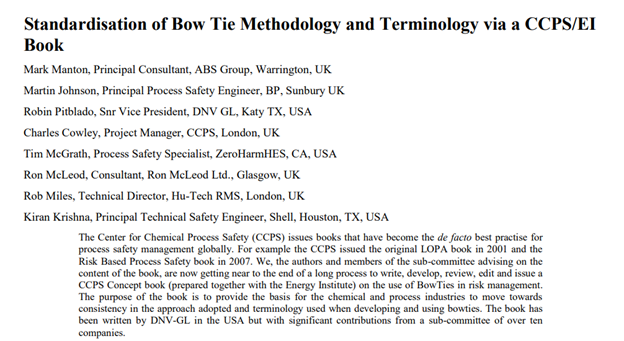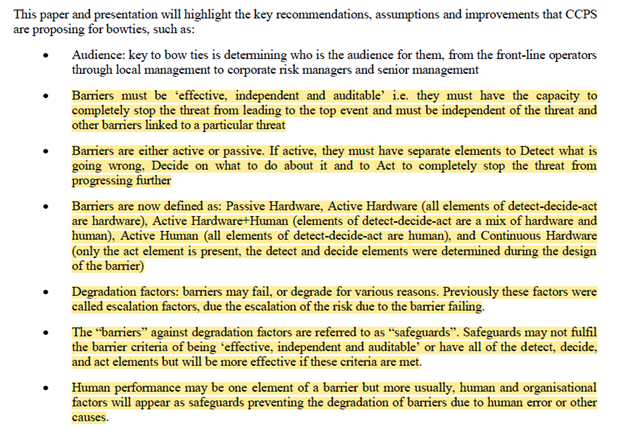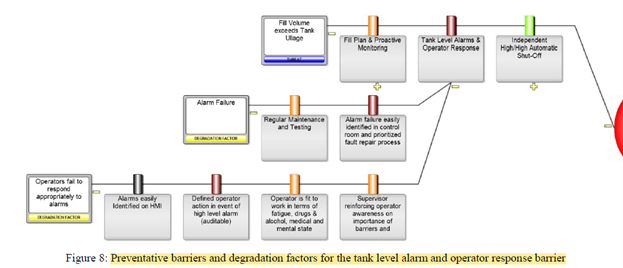
Controls, barriers, safeguards, degradation controls…I’m currently in a bit of a bow tie frenzy, so here’s another paper talking about bow ties and barrier terminology.
This brief 2017 paper discusses the development of a book, seeking to better standardise terminology in bow ties and barriers. Summary to be posted soon.

In short, they state that:
· In their conceptualisation, ‘barrier’ is replaced with passive hardware, active hardware, active hardware + human (elements of both hardware and humans in the detect-decide-act sequence), and continuous hardware
· They specify that barriers, to be considered barriers, must be ‘effective, independent, and auditable’, and must have “the capacity to completely stop the threat from leading to the top event and must be independent of the threat and other barriers linked to a particular threat”
· ‘Barriers’ that don’t meet the above criteria can be considered as safeguards. Moreover, they add that safeguards also protect against the degradation of barriers
· They argue that a common problem of bow ties is the generic hazardous situations and threats. E.g. “LPG” instead of “50 tons of LPG in a bullet”
· Prevention barriers are on the left of the bow tie, mitigation barriers on the right. To be considered a barrier, they have to meet the definitions as above – and be independent of other barriers
· Barriers will also encompass some or all of the detect-decide-act sequence

· Safeguards, in contrast, prevent the degradation of barriers, or support the execution of barriers. These include the host of organisational and management system barriers, and ‘stronger’ controls that still don’t meet the definition of a full barrier
· They argue to remove the “simple human factors descriptors”, like procedures, training and competency as barriers in threat lines. They don’t meet the definition of a barrier. With more specificity, they can be safeguards acting as degradation controls
· “Human error” shouldn’t be a threat line, nor anywhere on a bow tie. They recommend being precise with specifically what element of human variability may degrade controls, and likewise, what will ensure barrier effectiveness

Also, importantly, specifications and expectations of human performance must be articulated. I’ve included another paper from these authors discussing how to do this – but covering more in the near future.
Authors: Manton, M, Johnson, M, Pitblado, R et al. (2017). Standardisation of Bow Tie Methodology and Terminology via a CCPS/EI Book. Hazards 27: Symposium series no 162. IChemE.
Study link: https://www.icheme.org/media/15543/poster-09.pdf
Link to a paper discussing specifying human performance: https://safety177496371.wordpress.com/2022/04/14/human-factors-in-barrier-management-hard-truths-and-challenges/
LinkedIn version of the above: https://www.linkedin.com/pulse/human-factors-barrier-management-hard-truths-ben-hutchinson
One thought on “Bow ties, barrier & control terminology and more”